Review: 1/350 Hobby Boss Dunkerque – My “Model of the Month” Award Kit Just Arrived!
I was very proud and to be awarded the ”Model of the Month” in April and I’m even more happy now that the award kit has arrived.
@editor Martin, our editor, sent me a list of kits to choose from, but the one I really wanted wasn’t on the list.
”I’d rather have the new ”Dunkerque” in 1:350 from HobbyBoss.”, I replied.
”I’ll get it for you.”, he said and yesterday it arrived.
I’ll take this opportunity to write an inbox review of the kit, since I think it deserves it.
So, here we go….
The first thing you notice when you open the box is that the hull is molded in one piece. I jumped for joy! None of those damned ”waterline options” that lead to joints along the waterline, that are impossible to conceal.
The bilge keels come as separate pieces, which made my heart beat a few extra happy beats as well. The detailing is excellent, with the thin ledge on the stem beautifully molded and very fine ”eyebrows” over the portholes.
The decks are in three logical parts. There will be no ugly joints across the decks to conceal. The planking and other surface detail are finely engraved. The fit between decks and hull seems to be excellent. Putting the deck in place, applying some liquid cement and some light finger pressure should be enough to get them in place.
The main parts for the superstructure are slide molded with some very nice details on all visible sides.
The upper bridge deck has very nice, thin bulwarks.
On the other hand, the cradles for the ships boats are crudely molded to the boat deck. An ambitious builder will have to do something about those cradles, or they will mar the impression of an otherwise very well detailed model.
Sprue A contains parts for the superstructure, including some nicely slide molded range finders and the crisp looking breakwater for the foredeck.
Sprue B contains the separate parts for the bilge keels, some more slide molded range finders and some of the best propeller bearing houses that I’ve seen in a kit.
Sprue C, of which there are two, contains the main gun turrets. They are well molded, but there is room for a little improvement if the modeler sands the surfaces flat, thus sharpening the corners of the turret. It’s tricky work though, since you don’t want to ruin the surface detail in the process.
Sprue C also contains probably the best molded ships propellers I’ve seen. They will look even better if you sharpen the edges of the blades with some careful sanding. All in all, the entire propeller arrangement is much better than on most ship kits.
Sprue D contains the barrels for the main and secondary guns, ships boats and other details. The barrels are nicely molded, but the muzzle openings aren’t perfectly centered. An experienced modeler should be able to solve that problem though. Also, turned brass barrels are likely to turn up soon enough on the aftermarket.
The ships boats are nicely molded with a detailed rudder and even a small propeller.
On the other hand the cutters (the rowing boats) are an example of a standard problem with ship kits.
They are molded in one part, so the thwarts (the sitting benches) look like big boxes, instead of the thin boards they really are. Considering the otherwise very high level of detail in this kit, this shortcoming is a bit surprising.
Sprue M contains some finely molded details.
Sprue N contains parts for the superstructure. The platforms for the bridge have nice thin bulwarks, but there is room to thin them down a bit more.
The undersides of those platforms are a bit inconsistent. One of them has molded braces on the underside, the other one has location groves for braces made from PE. Thinning the molded braces down shouldn’t be too much of a problem though.
Sprue Q contains some nicely slide molded parts for the superstructure. The walls of the funnel cap are too thick, but it’s easy to thin them down.
The parts for the Loire 130 float plane are molded in clear plastic, in typical Trumpeter/HobbyBoss fashion. This allows the builder to mask off the canopy and then paint the aircraft. Working with clear plastic is tricky though, especially here, since the hull of the aircraft is molded in two pieces with a seam all along the back and belly of the hull. (I guess airplanes don’t have ”hulls”, but I can’t find the right word at the moment. Will someone please tell me the right word in the comment section.)
The PE parts are well made and provide the catapult, outriggers for the central turret, ladders, railings for the superstructure and other details. Basically all you need except the railings for the main decks.
They have probably been omitted for cost reasons, but there are plenty of generic railings on the aftermarket and in most ship modelers spare parts box.
A small decal sheet provides the markings for the float planes and two flags.
The instructions seem to be clear enough, but the building sequence is nothing that you want to follow if you plan to paint the model. This is the case with all ship kits though, so it’s not much to whine about. A modeler has to think for herself.
The painting instruction is in color and has color codes for Mr Hobby, Vallejo, Model Master, Tamiya and Humbrol colors. It has a curious error, that you see in many painting instructions and on many ship models. The propeller shafts are bare metal.
I’ve never seen a photo of a ship in dry dock with bare metal propeller shafts. They are painted in anti fouling paint like the rest of the underwater hull. The shaft is the last place you want to have marine growth. The extra turbulence caused by the algae and seashells would lessen the efficiency of the propellers.
Someone told me that this idea of bare metal propeller shafts comes from shipyard models. To make the model look better in the owners office, they would polish the propeller shafts. Somehow, this practice seems to have trickled down into ship modeling in general.
As for the historical correctness of the kit, there are some minor issues.
The placement of the light AA guns on the kit reflects how the ship was planned to look. In practice, she never really looked like that. The light AA outfit was changed several times. The builder who wants to depict the Dunkerque like she looked at a specific moment, will have to do some research.
This research should be done before you glue the deck to the hull, since you have to drill out the location holes for the guns from underneath.
The kit provides no parts for the blast bags of the main artillery, so a builder who wants do depict her in her wartime state, will have to sculpt them.
As for the paint scheme, the grey color in the instructions is way too dark for her peacetime appearance, and possibly too dark for her wartime appearance as well.
The ships boats seem to have been more colorful too, even in wartime.
These problems are easily taken care of though.
Good sources of reference are:
”French Battleships 1922-1956” by John Jordan and Robert Dumas.
”Navires & Histoire nr 27” by Philippe de Caresse. It’s in french, but thanks to its wealth of photos, drawings and plans it’ worth the money even if you don’t read a word of french.
So in conclusion this is an outstanding kit. The one piece hull and the many slide molded parts spare the modeler hours of tricky and boring filling and sanding. The general level of detailing is excellent and for the most part uniform. Apart from railings for the main deck, rigging thread and paint, the kit provides you with all you need to build a very nicely detailed model.
The minor issues with the ships cutters, the boat cradles and the historical correctness are easily taken care of by the average modeler.
Actually it’s one of the best ship kits I’ve seen. I’m a pretty jaded ship modeller, but as I unpacked the parts and started test fitting the hull, decks and superstructure I actually got excited. I don’t know when that last happened.
I dry fitted the decks to the hull and stacked the superstructure on top and started dreaming. Then I took out my Graf Spee and Scharnhorst, put the Dunkerque between them and envisioned a collection depicting the naval arms race between Germany and France.
As soon as I’ve uploaded this article, I’m going to start building. I’m already humming the Marseillaise…


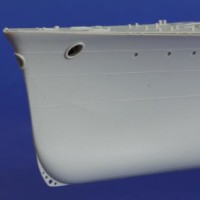


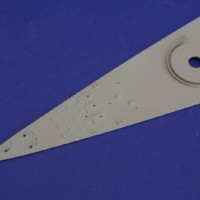

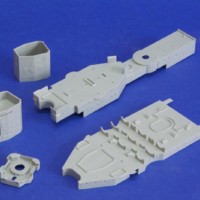



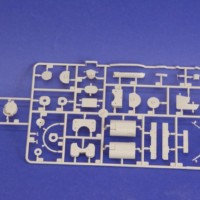






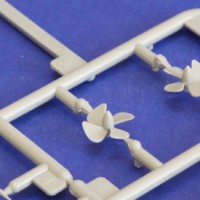
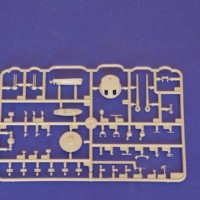



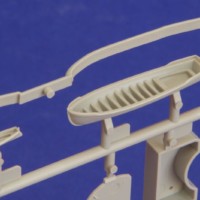




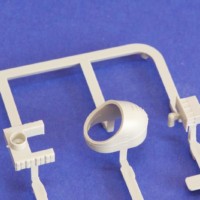











Ulf, congratuations! Looks like a perfect canvass for your skills!
Congratulations Ulf, your enthusiasm is positive contagious.
Well deserved prize, Ulf...I'm sure the end result will be just as spectacular as your others I've enjoyed seeing over the years.
Very cool. Happy to see that you liked the kit so much, and the review is interesting. Also, it is hard not to appreciate the significance of the new Chinese companies like Hobby Boss for ship modeling
Trumpeter, HobbyBoss, Meng etc... They are keeping ship modeling alive. Tamiya and Hasegawa haven't brought out much interesting the last few years.
Ohh, you chose a ship?
Hull = airframe, I'd say.
Congrats - can't wait so see it built!
The molding technology is really improving things. Knowing what you'll do to this "canvas" I eagerly await the final result.
Congratulations, Ulf. So, now when you started a line of scratch built models they launch a series of models one can actually build without having to correct everything in the box... isn´t that typical?
Looks like your room is getting even more dedicated to modeling and woodworking
Yes, it's typical. Just when I've come to the conclusion that there are no kits that I want to build, and that scratch building will be my thing, HobbyBoss releases Dunkerque and USS Alaska and Combrig brings out Von der Tann. Well, we'll see what happens.
And yes, woodworking is competing with modeling for my attention. I had planned to build a new kitchen chair this week...
Great one Ulf,you look as pleased as punch,Congrats..
Congrats Ulf ! Thanks for the kit review too. I'll be looking forward to seeing this one completed. Nice choice my friend.
Another masterpiece is coming!... congrats Ulf.
Congratulations, Ulf! She looks like a beauty of a kit. Bravo!
Congratulations Ulf. Lots of succes with the French battle wagon.
Regards, Dirk/The Netherlands